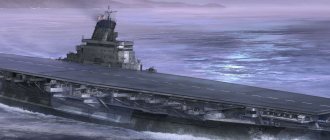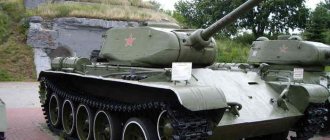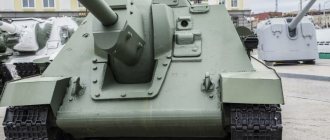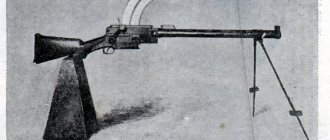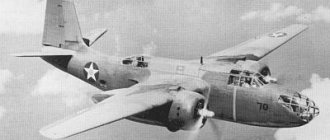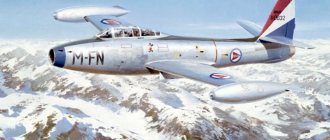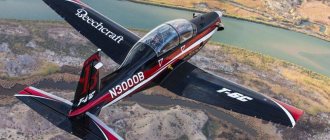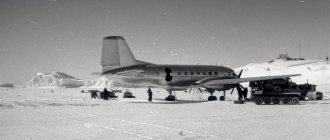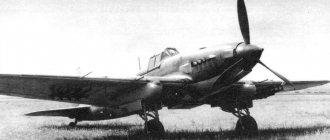Competition always stimulates technological progress. In the Soviet Union, despite the planned economy and the state monopoly on the means of production, competition also took place, although not in all sectors. The design bureaus that developed defense systems fought mercilessly for primacy and the right to be called the best. Examples of such competition are the best interceptors that entered service with the Soviet Army at approximately the same time, in the 80s, namely the MiG-29 and Su-27. Photos of airplanes lead citizens uninitiated in the intricacies of aircraft construction to think about their similarity. In fact, they represent different classes of fighters. The Su-27 is a heavy interceptor, and the MiG-29 is a light one. And in some sense, each of them is the best.
A Tale of Two Fighter Classes
Already in the fifties, a division of interceptors into two categories arose. In case of war, one of them had to fight in maneuverable air battles, called by pilots “dog fights” or “carousels”. In this situation, small fighters with low mass and a large wing area could count on success. The second class of interceptors was intended to destroy enemy strategic bombers and missiles. This required high speed, maximum ceiling, powerful long-range weapons and an effective on-board radar. Heavy interceptors captured the target and struck at it at long ranges. They were created and put into service in countries that have nuclear weapons and aspire to regional or global leadership.
Which is better - light or heavy?
But all this did not mean that these two classes of fighters would not have to meet in the skies. Quite the opposite. For example, two very dissimilar opponents, the light and maneuverable MiG-21 and the heavy F-4 Phantom, met in the skies of Vietnam, and the pilots of each of them sought to realize the design advantages of their aircraft, depending on the situation.
The ratio of heavy and light fighters in the arsenal of the air forces of leading countries is usually 3 to 7. It happens that it is 2 to 8, and even 1 to 9. But more expensive and technologically complex machines, that is, heavy interceptors, constitute a quantitative minority of the military aviation fleet. There is a completely logical explanation for this. First, most combat missions do not require excessive technical superiority. Secondly, it is easier to find a foreign buyer for a cheap and efficient aircraft than for an expensive and complex one. Not all countries in the world are concerned about containing the nuclear threat, but they need a military air fleet, sometimes even simply for status reasons, like Switzerland, for example. And not all countries have a defense budget that allows them to purchase expensive “toys” that also require special pilot training and expensive maintenance.
Considering that not all states need a heavy interceptor, and knowing the general statistics, we can conclude that out of every hundred interceptors currently flying in the earth’s atmosphere, ninety-three are light.
Even a quick comparison of the MiG-29 and Su-27 leads to the conclusion that the Mikoyan fighter has a higher export potential than the Sukhoi.
Our eternal struggle between good and even better
At the end of the 70s, two Soviet aviation design bureaus fought to ensure that their fighters received a defense order. Each of them had their advantages and, of course, disadvantages. The Su-27 was favored by its better flight characteristics, powerful on-board radar and large payload. The MiG-29 was distinguished by its lower cost, unpretentiousness, ability to take off and land at poorly prepared airfields, while also having very good performance characteristics. It would be logical to launch both aircraft into production, giving the quantitative advantage to the Mikoyans, but the Soviet Ministry of Defense decided to build more Sukhoi. The comparison of the MiG-29 and Su-27 was made on formal grounds, without taking into account the practical experience of using machines of various classes. General designer Mikhail Petrovich Simonov managed to convince the leadership of the USSR Ministry of Defense of the unconditional superiority of his aircraft.
Then a general restructuring happened, and there was less money in the state treasury, which forced the government to significantly cut defense spending. The MiG faded into the background; in the 90s, the program received half as much funding as the Su. The Mikoyanites had to do something to save their brainchild from complete oblivion.
Which is better - MiG or Sukhoi? Sukhoi is better, but they rely on the MiG
There are few sectors of the national economy where we can resist Western producers.
After the collapse of the Union, we lost our advanced competencies in almost all market segments, especially in technology. On the fingers of one hand I can count those industries where we still hold priority, and then only on the basis of the colossal Soviet foundation, developed by generations of Soviet engineers and scientists, which we inherited from the USSR. Among them, military aircraft manufacturing is far from in last place. To address possible questions, I’ll say right away that the top five of these industries are as follows: 1) Rosatom, 2) gas and oil production, 3) military aviation industry, 4) military (especially in terms of submarines) and icebreaking shipbuilding, and 5) Roscosmos, which rolls down, eating up the remains of the Soviet pie.
Today we will talk about the military aviation industry. I will say right away that we have retained our leading position in this highly competitive market only thanks to the excellent Soviet heritage and the presence of two leading design groups competing with each other - PJSC Sukhoi Company and JSC RSK MiG. And their successes in recent years are based mainly on breakthrough Soviet developments that were ahead of their time - the light fighter Mig-29 and the heavy Su-27.
In the post-Soviet years, Sukhoi took the lead. It got to the point that a year ago the United Aircraft Corporation (UAC) decided to unite them, merging them into the Unified Military Aviation Division. The goals were good:
The structure was supposed to be involved in the development, production, sales and maintenance of the entire line of current and future UAC combat aircraft. The consolidation of the main research and production capacities of the military aircraft industry was supposed to serve the task of more effectively implementing existing programs and developing promising projects.
But it didn’t work. And a year later the merger was suspended. Today we will talk about the reasons behind this and the prospects for the development of the domestic military aviation industry.
Stop machine
The reason for pausing the merger of the companies was most likely the lack of a comprehensive scheme for the merger of Sukhoi and MiG, which would include the combination of design plans into a single plan for the long-term development of the product line, a unified development strategy, as well as a financial plan for the recovery of the enterprise, firstly turn of JSC RSK MiG.
The merger algorithm involves building a balance in the relationships of the connecting parties. This is a delicate mechanism that in Russia, especially in the aircraft industry, has not yet been rebuilt. Because of this, a merger usually means being “eaten” by a stronger party (in our case, it is undoubtedly “Dry”) by a weaker one. Of course, such a prospect hardly suited the “migars”.
At the same time, it is obvious that the UAC has not fully coped with the role of arbiter assigned to it in the current situation. Let me remind you that the only positive experience of creating a division - transport aviation - was not noticed and used in the corporation, and the division itself as a structure ceased to exist with the resignation of Alexey Rogozin from the post of general director of the S.V. Ilyushin Aviation Complex.
In general, the problem of divisional management in the UAC is still not a fully resolved problem. No proven templates on this topic have been created, and the existing positive experience is not used. This raises more and more questions about the role and place of the UAC as the main management organization in the reform and development of the aircraft industry. Apparently, the task of creating operational divisions will be solved by the Rostec aviation cluster.
Balances of the warring parties
At the same time, it should be noted that the military aircraft manufacturing sector in Russia is the only one that has been able to demonstrate outstanding competitive qualities.
Since the 1990s, it has developed dynamically, withstood high rates of mass production and, in a number of cases, came up with unique offers on the market. On the other hand, the military aircraft manufacturing market itself in the 21st century is one of the most competitive and is currently undergoing a stage of global transformation. In general, the task of combining Sukhoi and MiG - two completely different companies - objectively had its pitfalls. On one side of the scale
— PJSC Sukhoi, which for many years acted as a donor to the entire domestic aircraft industry. Without the export contracts implemented by the corporation, neither the short-haul Sukhoi Superjet nor the medium-haul MS-21 would have appeared. Demand in the market allowed Sukhoi to update the line of its machines on the “twenty-seventh” platform (in the fourth generation - 4+, 4++), while simultaneously creating the fifth generation fighter Su-57, which entered mass production in 2022 and began to arrive in the Russian Aerospace Forces. Over the years, the company has accumulated vast design and production experience that is not found anywhere else.
On the other side of the scale
- the less successful JSC RSK MiG, which was unable to achieve results similar to the success of Sukhoi and its line of heavy aircraft on the Su-27 platform with its main product, the light fighter MiG-29. A significant share of the responsibility for this lies with the MiG management, which did not fully take advantage of the obvious advantages of the “twenty-ninth”: relative cheapness, the creation of a deck version of the machine, large export contracts.
By the way, the lack of effective management of the “migars” had a detrimental effect not only on the work of the company, but also on the execution of the mentioned contracts. Large deliveries of “twenty-niners” to India and Algeria did not become the driving force for the development of “MiG”. Moreover, the delivery to Algeria turned into a scandal - Russia’s loyal partner, who was supposed to receive 34 MiG-29SMT/29UBT units as part of a $1.1 billion contract, insisted on the recall of already delivered aircraft due to gross manufacturing defects identified (this is such a fact -ap, who could bury anyone). Although this indirectly influenced the fact that MiG was never able to win the contract to create India’s national fighter, and the modernization projects for the vehicles already delivered to the Indians were not fully implemented.
In the early 2000s, there were attempts to restart the enterprise; limited deliveries of the MiG-29 were made to the countries of Southeast Asia and Africa. But all this did not lead to the rapid rise of JSC RSK MiG. Now the further development of the mainline model of the enterprise is in question - the latest light fighter of the 4++ generation MiG-35, which was the result of the evolution of the MiG-29K/KUB and MiG-29M/M2 aircraft, has not yet found its buyer.
A ray of hope for the “blinkers”
But happiness came from unexpected places.
In 2018, the hypersonic missile system “Dagger” appeared in the arsenal of the Russian Aerospace Forces, a gravedigger of aircraft carriers, even by the very fact of its appearance, putting an end to the concept of AUG, making 11 American aircraft carrier strike groups nothing more than floating garbage, a potential collective cemetery for the crews located there, air wing pilots and the US Marine Corps Marines traveling with them around the world. And the carrier of this terrible weapon was the supersonic high-altitude, all-weather, long-range fighter-interceptor MiG-31, created back in Soviet times, in its modification MiG-31K, converted to the formidable “Dagger”. Now the MiG Design Bureau is working closely on creating, on the basis of the MiG-31K, a promising fifth-generation long-range interceptor aircraft complex - an interceptor called the MiG-41. Now its creation is at the R&D stage (experimental design work). But this is a task for the long term. Because the current fleet of MiG-31 aircraft is sufficient to convert them into MiG-31K, and the needs of foreign customers, such as Venezuela or Algeria, are zero, since they do not have Daggers, and we are unlikely to share them. This is a strategic weapon to ensure the security of the Russian Federation. Therefore, the MiG-41 is a vehicle of exclusively domestic niche demand; it cannot enter the foreign market with them.
Sukhoi's pride and misfortune
We must pay tribute to Sukhoi PJSC - they made the most of all the advantages of the Su-27 they inherited. Its super successful platform, which allowed them to create a wide range of heavy multi-role fighters (and even the multi-role supersonic fighter-bomber Su-34), not only brought good profits to the domestic defense industry, but also created a kind of “Sukhoi cult”, thanks to which Sushki was even acquired countries that objectively did not have a request for such a heavy vehicle.
A recent example of this is the Su-30SM.
At times, the purchase of modern Russian heavy fighters increased the potential of the air forces of the purchasing countries so much that in a number of regions it even led to geopolitical changes. In particular, according to analysts, it was thanks to the presence of effective Russian-made air defense systems, as well as the 19 Su-30MKVs in service, that after the death of its president Hugo Chavez, Venezuela was able to avoid the invasion of foreign “democratizers” from neighboring countries, incited by one neighboring country (whose name we all know). However, trouble crept up unnoticed. You can't milk the same cow all the time. The market potential has exhausted itself. The result of the work of Sukhoi and a number of its foreign competitors is the fact that the niche of heavy multifunctional vehicles is now almost everywhere filled. Moreover, due to global technological renewal - the transition of leading powers to fifth-generation fighters - the number of offers on the market for modernized fourth-generation aircraft will increase, to which export versions of fifth-generation aircraft will naturally be added. Thus, the market for heavy machinery in the next 20 years will be oversaturated and extremely competitive. It will be possible to win a place in the sun on it only by maintaining leadership in the “modernization race” of fourth-generation cars and the speedy introduction of export versions of fifth-generation cars.
Therefore, PJSC Sukhoi Company is entering a period of difficult and fierce competition. At the same time, the market for manned attack aircraft will continue to be replaced by attack UAVs. This means that the S-70 Okhotnik heavy attack UAV project being developed by Sukhoi is becoming more and more relevant every day. In fact, in the most complex segment of UAVs, heavy attack jet vehicles, only American-made drones can compete with the Okhotnik.
A chance for MiG that cannot be missed
It just so happened that global players, preparing for confrontation with each other, followed the path of creating heavy fighters, acting exclusively in the logic of a global war and a potential clash of major powers in extended theaters of military operations.
In the modern world, local conflicts of low and medium intensity most often occur, where heavy fighters have nowhere to roam. There, their performance characteristics turn out to be excessive, and their cost is excessive. Simply put, in such cases a vehicle is required, firstly, of a lighter class, and secondly, multifunctional, capable of performing both strike missions and providing air defense. Progressive countries of the third world: India, Pakistan, the countries of the Middle East and Southeast Asia - economic leaders of global development, have a strategic need to create “national” multifunctional aircraft. The conflicts in which Russia is involved also demonstrate the need for a compact, maneuverable, multifunctional medium-class vehicle with strike and air defense functions (especially in confrontation with UAVs), allowing it to be used in conjunction with its own drones and air defense systems.
Thus, one of the most promising areas in the domestic and export markets is now becoming the niche of a medium (according to the Russian classification - light) multirole fighter. And then the time comes for RSK MiG, since it is it, and not PJSC Sukhoi, that has the key competencies and experience in creating aircraft in this niche.
The future of Russian fighter aircraft
The Russian aviation industry is now on the verge of transformation in model and technological development, as well as in the selection of an effective corporate model that will allow it to develop further.
Su and MiG fighters, created using Soviet technology, form the basis of modern Russian fighter aircraft. The family of domestic heavy fighters of the fourth technological stage, created on the Su-27 platform, evolved through a series of upgrades into the 5th generation fighter Su-57. But Sukhoi should not rest on its laurels. It is important to maintain the pace of modernization and technological progress, developing the next technological versions, as well as urgently mastering the UAV market.
RSK "MiG" faces the challenge of a complete relaunch of its model range - using, of course, the successful design solutions of the MiG-29 family of vehicles. The niche of a medium (light) multirole fighter is now the most promising in the domestic and global markets.
This provides a certain advantage in creating promising models in the niche of heavy and medium multifunctional UAVs. In general, the UAV market will develop along two divergent lines - consolidation in order to create effective multifunctional machines and reduction as part of the development of the doctrine of “smart swarm” of ultra-small vehicles. Therefore, here MiG can also try to develop its niche, for example, by creating a complex “Head-Leader” model with its own multifunctional vehicle at the head.
Summary. Growth points
For Sukhoi PJSC: export version of the Su-57, Su-39 (drone killer, 4+ and 4++ generation subsonic vehicle based on the Su-25 and Su-24), heavy multifunctional UAVs.
For RSK MiG JSC: MiG-41, MiG-35 (and other 4+, 4++ and 5th generation vehicles based on the MiG-29), medium multifunctional UAVs.
This concludes the review of the state of affairs in the domestic military aviation industry, and in particular the two leading domestic developers and manufacturers of operational-tactical fighter (and bomber) aircraft. All the best to everyone.
Battle over Lipetsk
The leadership of the Mig design bureau, represented by General Designer R. A. Belyakov, insisted on a demonstration training battle. M.P. Simonov objected, arguing that everything was clear, “Sukhoi” was better, and that’s all. But the Mikoyanites were supported by S. Askanov, who headed the Lipetsk Center for the Combat Use of Aviation, and the battles took place. To Simonov’s chagrin, a comparison of the MiG-29 and Su-27 showed in practice a clear underestimation of the competing vehicle. In eight out of ten fights, the 29th won, and at all distances. The powerful Sukhoi radar did not provide any advantages due to the smaller geometric dimensions of the MiG. Simonov managed to convince the management to introduce unilateral restrictive conditions for the opponent, reducing the permissible angle of attack for him. The results for the Su-27 were the best, but it was not always possible to escape persistent and successful attempts to catch its tail. The comparison of the Su-27 and MiG-29 was declared not entirely correct due to the better flight training of the former pilot. So this experiment did not lead to any fundamental decisions.
More about airplanes
One of the most obvious examples is the creation of excellent air interceptors, which replenished military weapons at approximately the same time - in the early 80s of the last century. In particular, we are talking about Su-27 and MiG-29 aircraft. If you analyze photographs of military equipment, the models look very similar. However, in fact, this judgment is incorrect, because the models in question belong to different classes and have a lot of differences. First of all, it is worth noting that the Su-27 is a heavy interceptor, and the MiG-29 is a light military aircraft .
Su-27
War in Africa
As expected, the MiG-29 found foreign buyers. He ended up in the ranks of the Air Forces of Iraq, India, Ethiopia, Yugoslavia and many other countries that had a chance to try him out in action. The political situation in the world was changing rapidly, and sometimes the same type of aircraft ended up in service with opposing sides. After the separation of Eritrea from Ethiopia, a conflict arose between the two countries on territorial grounds. Then, in 1999, the Su-27 had to fight against the MiG-29. It is known about three air battles that took place on February 21, 25 and 26 and ended in victory for Ethiopian pilots who shot down three Eritrean MiGs (one was not counted, but, having received damage, did not return to base, according to intelligence data).
The sky is beyond the Su-27
Seeing the poor results of two cases of use of Ethiopian missiles, the enemy began to more actively use its aircraft.
On February 21, 1999, they even carried out an ambush with two MiG-29s, bringing the first one out to attack at an altitude of about 6 kilometers on the Ethiopian Su-27 No. 52 on duty above. Approaching the acceleration, the Su-27 pilot used an R-27RE missile from a range of about 45 kilometers. But the missile exploded near the target without hitting it - the MiG-29 pilot turned to the side, knowing about the surprise for the fighter attacking him.
The Ethiopian pilot, continuing to approach the enemy in a turn, fired another R-27 at a distance of 10 km at the retreating enemy and even saw the explosion of his missile near the enemy MiG, which began an energetic descent. But then a missile was fired at the Su-27 in response from another MiG-29, which had previously been in ambush behind the plateau and suddenly began to pursue the attacker.
The altitude difference of more than four kilometers and the supersonic speed of the SU-27 allowed him to escape, although the sight of two self-destructing missiles fired at him from the MiG remained in the pilot’s memory for a long time.
The damaged Eritrean MiG-29 was not counted as a clear victory, although, according to intelligence data, it did not return to its airfield. The pilots, having carefully analyzed this air battle, became convinced of the correctness of their tactics, the superiority of aviation technology, and perked up.
Already on February 25, 1999, a Su-27 with tail number 54, performing scheduled duty in the air, was sent out to intercept a pair of MiG-29s, clearly planning to attack Ethiopian ground forces. Taking into account the experience of his comrades and clearly following the commands of the guidance officer, the pilot accurately entered the zone of authorized launches, correctly maintained the regime and launched two P-27s on time at the leading open pair, piloted by the Eritrean pilot Samuel.
MiG-29
© wikipedia.org
As a result, the first MiG-29 was shot down, immediately disintegrating in the air, the pilot was killed, and the second, turning vigorously, returned to its territory without completing the mission. The victory was confirmed by ground observers.
The next day, the enemy decided to catch the Su-27 on duty in the air and, at the end of its duty, sent the MiG-29 towards the capital of Ethiopia. The ground control point noticed the target at a high altitude and immediately began to aim the Su-27 with tail number 58 at it. Everything happened almost like in an exercise, until the minute the ground control point discovered another Eritrean MiG-29 heading towards at low altitude and suddenly began targeting the Su-27.
To the credit of the Ethiopian pilot, despite the warning from the ground, and later the trill of the “Birch” (the pilot’s warning system about his detection), signaling that his plane was captured by the enemy and a possible close launch on it, he managed to take aim in an extremely limited time and launch two P-27s, which accurately hit the target. Eritrean pilot Jonas was killed. The second enemy plane, seeing the falling debris, turned away and returned to its airfield.
Due to the low amount of fuel, the Su-27 also had to return to its base. After landing, he had about two hundred kilograms of kerosene left in his tanks, which is less than half of the permitted emergency balance.
A thorough analysis of this battle showed that the Su-27 pilot was not shot down only because he fully realized the advantage of this machine, which has a slightly longer permitted launch range and, in this case, greater speed.
This air battle was recorded on videotape by a front-line Ethiopian correspondent. A few days later, this video was broadcast on local television, which helped raise the morale of the troops and the prestige of Sukhoi aircraft. The Su-27 was recognized as the eldest in the family of Ethiopian combat aircraft. Thanks to the effective use of the Su-27, absolute air supremacy was achieved. During the entire war, Eritrean aviation was never used either to bomb enemy troops, the territory of the country, or to influence other types of aviation. And the Ethiopian Air Force shot down three Eritrean MiG-29s in air battles (another MiG may have been written off due to damage) without suffering any losses.
Reasons for the defeat of Eritrean pilots
One could conclude that the Su-27 is completely superior if not for two significant circumstances. In two cases, the wingmen of the Eritrean pairs turned around after missile launches by Ethiopian planes and chose to flee. And in all three episodes, the winners were separated from death by a matter of seconds. The Ethiopians, trained in Soviet flight schools and better qualified, were able to realize the design advantages of their interceptors to a greater extent than the Eritrean pilots. In addition, they turned out to be more courageous. It is difficult to judge how objective the practical combat comparison of the MiG-29 and Su-27 turned out to be. The characteristics of aircraft do not always directly affect the result; there are often cases in history when a well-armed enemy is defeated by a brave enemy.
Germans
German Air Force pilots had the opportunity to verify the high quality of Soviet aircraft not only during the Great Patriotic War, but also after 1989. They are accustomed to piloting very good vehicles in service with NATO countries (F/A-18A, F-16A, Tornado, etc.), with characteristics corresponding to the level of the Su-27. After the unification of the Federal Republic of Germany and the German Democratic Republic, the MiG-29 was adopted by the Luftwaffe. German pilots were completely delighted with its controllability, maneuverability, cabin ergonomics and other qualities that made the aircraft a pilot's favorite. They are still part of the Air Force of the Bundesrepublic. It is quite possible that other types of our interceptors would have been highly appreciated by NATO experts, but historical realities did not give them the opportunity to compare the MiG-29 and Su-27. Photos of a Soviet aircraft with Maltese crosses on the planes and fuselage personify the curious inconsistency of modernity.
Objective parameters
Large-scale clashes between armies armed exclusively with Soviet and Russian equipment have not yet occurred, and this is good. Consequently, there are no objective statistics to judge the superiority of a particular aircraft model. Nothing, a comparison of the Su-27 and MiG-29 can be made using the available flight characteristics of the two interceptors. The main parameters of the two aircraft are shown in the table.
| INDEX | MiG-29 | Su-27 |
| Speed, km/h | 2450 | 2500 |
| Rate of climb, m/sec | 330 | 300 |
| Radius of combat use, km | 2100 | 3900 |
| Thrust, kG | 2x5100 | 2x12500 |
| Ceiling, m | 17000 | 18500 |
| Curb weight of the aircraft, kg | 15240 | 23000 |
| Payload, kg | 3000 | 8000 |
| Length, m | 17,32 | 21,9 |
| Wingspan, m | 11,36 | 14,7 |
| Height, m | 4,73 | 5,93 |
| Wing area, sq. m | 38 | 62 |
In terms of mass indicators, size, speed, combat radius and ceiling, the Su-27 has an advantage. Comparing the MiG-29 with this aircraft in terms of climb rate reveals the superiority of the lighter interceptor in close maneuver combat. Both samples are built using a twin-engine design, which indicates their high survivability and reliability.
Cabins
There is another important point on which the MiG-29 and Su-27 should be compared. A photo of the cockpits reveals almost their complete identity. Despite the fierce competition between design bureaus, development engineers were able to find a common language in the interests of domestic combat aviation. Pilot training can be carried out more successfully, and retraining will be reduced to mastering the characteristics of the behavior of the aircraft in critical conditions. The similarity in the location of controls and controls also has a positive effect on the export attractiveness of both types of aircraft.
Su-27 for Ethiopia
Considering the acquisition by Eritrea of Soviet MiG-29s and the large territory of Ethiopia (about the size of Ukraine), the government of this country decided to purchase their eternal “competitors” - Su-27 aircraft. The final choice fell on the universal Su-27SK aircraft, which were already “used” and had spent most of their service life in the south of Russia.
After making an advance payment, settling political issues and a short pre-sale preparation, which lasted for two months, the transport sides of the Il-76 brought the disassembled Su-27UBK and then the Su-27SK to Ethiopia.
The work of assembling and debugging newly assembled aircraft by the factory team served as good practice for the development of aircraft and their equipment by Ethiopian specialists, who actively helped the Russians.
During the debugging process, some serious technical problems emerged. After disassembly, transportation and subsequent assembly, of course, a sharp increase in the failure rate was to be expected. All of them were carefully recorded by ill-wishers for a report to the commander-in-chief of the Ethiopian Air Force, Abebe Tekle Haymanot, “Commander-in-Chief Job,” as he was called in the troops. This is where his concerns came into play when choosing the type of aircraft.
Almost every flight of the Sushki ended prematurely due to failures of the hydraulic system, SDU-10, and radio equipment. There was even a failure of one of the plane's two engines. In addition to all this, while demonstrating extreme aerobatic capabilities at low altitude, experienced Russian test pilot V. Myzin was distracted for literally one second and lost speed while performing a loop. His plane began to parachute, and the pilot had to eject from an inverted position.
Su-27
© wikipedia.org
We must pay tribute to the endurance of the commander-in-chief, who learned from life experience that the right decision is one that is fully implemented. He very quickly understood all the arguments about the influence of running-in systems after assembly on the causes of failures, and understood the test pilot’s explanations about his failure to take into account the conditions of a high-altitude airfield. As a result, the disaster did not affect the performance of the contract. On the contrary, the accident made it possible to change the original purchase plan in the direction of increasing the number of combat training (designed for two pilots) aircraft, since instead of the crashed combat aircraft, on the advice of his pilots, the commander-in-chief ordered another “spark”.
The Su-27UBK combat trainer fully performs all the functions of a combat aircraft. Its equipment is identical to the Su-27, the cabin was increased by reducing the volume of the fuel tank, which slightly reduced the flight range.
At the same time, the presence of a co-pilot gave more confidence in the correctness of the actions being performed and a psychological sense of support for newcomers, which had a particularly strong effect on the first combat missions.
The training of flight and technical personnel was carried out at an accelerated pace. For the final test of readiness, several tactical flight exercises (FTU) were conducted in January on the interaction of aviation with other types of troops.
Further development
Currently, comparing the MiG-29 and Su-27 no longer makes much sense. These aircraft are being replaced by their modifications, including deeply redesigned versions that have their own designations. The next step in improving the MiG-29 platform was the MiG-33 (or MiG-29M), featuring updated aerodynamics, a larger fuel tank and a HOTAS control system. An even more modern modification is the MiG-35.
The Sukhoi Design Bureau is also not standing still. The Su-34 and Su-35 represented the further development of the T-10 platform, the ancestor of which was the Su-27. The results of these large-scale works will have to be compared.
Performance characteristics of the MiG-31
MiG-31 crew
— 2 people
Dimensions of MiG-31
— Length: 22.69 m — Fuselage length: 20.62 m — Wingspan: 13.46 m — Height: 6.15 m — Wing area: 61.60 m² — Chassis base: 7.11 m — Chassis track: 3.64 m
Weight of MiG-31
— Empty weight: 21820 kg — Fully fueled weight: 39150 kg — Maximum takeoff weight: 46750 kg — Fuel weight: 17330 kg — Payload weight: up to 5000 kg
MiG-31 engine
— Engine: 2 × TRDDF D-30F6 — maximum thrust without afterburning: 2 × 9500 kgf — thrust with afterburner: 2 × 15500 kgf — engine weight: 2 × 2416 kg
Maximum overload of MiG-31
- 5G
Speed of MiG-31
— Maximum permissible speed at low altitude: 1500 km/h — Maximum permissible speed at high altitude: 3700 km/h (M=3.1) — Subsonic cruising speed: 950 km/h (M=0.9) — Supersonic cruising speed: 2500 km/h (M=2.35) — Landing speed: 280 km/h
MiG-31 flight range
- at an altitude of 10000 m, at M=0.8: 1450 km - at an altitude of 10000 m, at M=0.8 without refueling with 2 tanks: up to 3000 km - at an altitude of 10000 m, at M=0.8 with one refueling: up to 5400 km - at an altitude of 18000 m, at M=2.35: 720 km - Combat radius: 720 km - Flight duration: up to 3.3 hours - Service ceiling up to 30000 m (dynamic); up to 20600 m (practical)
Thrust-to-weight ratio of MiG-31
— with full fuel: 0.79 — at maximum take-off weight: 0.66
— Rate of climb at the ground 160 m/s; at supersonic speed, at H = 11 km 250 m/s — Takeoff: 950–1200 m — Mileage: 800 m
Armament of the MiG-31
One of the weapon kit options:
— one 23mm GSh-6-23M cannon (260 rounds); - combat load - 3000 kg; — 4 long-range missiles R-33; — 2 medium-range missiles R-40T; — 4 short-range missiles R-60. R-60M.
Cannon armament of the MiG-31
— 1x23mm GSh-6-23 ammunition load of 260 shells; — rate of fire at low speed: no less than 8000/min., at t = −60 °C: no less than 6400/min.
Missile armament of the MiG-31
— The missiles are placed on six hardpoints (additionally two hardpoints for the PTB): four points on the hull and four on the pylons on the wings allow, depending on the specific ammunition used, up to four long-range missiles + up to four more medium or short-range missiles ( including four long-range and four medium R-77 missiles);
MiG-31 air-to-air missiles
— long-range: four P-33s up to 304 km (2012), six P-37s to combat targets maneuvering with an overload of up to 8G P-33s with a range of 120 km (1981) and P-33S 160 km (1999); - medium range: two, R-40, since 1999 only R-40RD has been used, range 80 km, missile speed 4.5-5Mach, target altitude 0.5-30 km, target maneuvering 4G, four R-77, range 110 km, target maneuvering 12G; — short-range: four R-60(M), four R-73 infrared spectrum.
Fire is possible by air-to-surface means. Laser-guided bombs weighing 500 kg, as well as anti-radar/anti-ship missiles Kh-31P (up to 160 km), Kh-58, maximum payload weight is 9000 kg.
